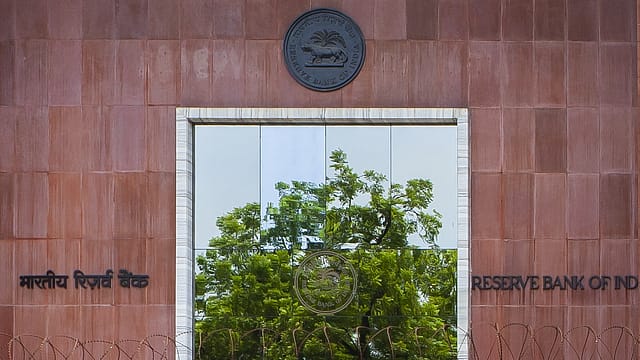MPC minutes: Members divided on India's economic growth
ADVERTISEMENT

India's six-member Monetary Policy Committee seems to be divided on the country's economic growth, according to the minutes of the MPC's April meeting.
While Reserve Bank of India governor Shaktikanta Das, deputy governor Michael Patra, and executive director Rajiv Ranjan remained upbeat about India's growth, MPC's three external members Jayanth R. Varma, Ashima Goyal, and Shashanka Bhide cautioned about early signs of a slowdown.
Here are some excerpts from the recently held MPC meeting:
Ashima Goyal: "Although growth is resilient, there are signs of slowdown in some high frequency data," Goyal said, adding that a further rise in real interest rates is best avoided at present since high real rates can trigger a non-linear switch to a low growth path.
"Softening non-oil non-gold imports point to weakness in domestic demand; slowing exports are affecting manufacturing; rising loan rates are reducing demand for low income housing," Goyal added.
Shashanka Bhide: "The growth performance points to both uneven growth across production sectors and subdued growth in the more recent quarters of FY 2022-23," Bhide said.
January 2026
Netflix, which has been in India for a decade, has successfully struck a balance between high-class premium content and pricing that attracts a range of customers. Find out how the U.S. streaming giant evolved in India, plus an exclusive interview with CEO Ted Sarandos. Also read about the Best Investments for 2026, and how rising growth and easing inflation will come in handy for finance minister Nirmala Sitharaman as she prepares Budget 2026.
"The key concern on the growth front in the immediate future is the drag caused by the weak external demand conditions," he said, adding that the impact of any adverse weather conditions on Indian agriculture provides additional downside risk to the growth trajectory.
Several factors are in play in determining the domestic output growth conditions in the short term, according to Bhide. "The dynamics of high frequency indicators points to continuation of the present growth momentum. For example, the PMI for manufacturing and Services in March have continued to reflect an expansionary phase, although both are below their 6 recent peaks. The GST collections and Railway freight traffic indicator show moderation in YOY growth in Q3: FY 2022-23 and the recent months of January-February 2023. Non-food credit growth, however, continued expansion at double digit rates. The sales growth data for the corporate sector, indicates price rise is an important driver of revenue growth in Q3: FY 2022-23," he said.
Jayanth Varma: On the growth front, Varma cautioned that early warning signs of a possible slowdown are visible to a greater extent. "In the current situation of high inflation, monetary policy does not have the luxury of responding to these growth headwinds," he said.
Shaktikanta Das: According to the RBI governor, domestic growth impulses remained buoyant in Q4 FY23. "Looking ahead, the thrust on infrastructure spending by the government would support investment activity. The drag from net external demand is moderating. Overall, broadening of economic activity and the strength of the external sector have allowed us room to remain steadfastly focused on inflation," Das said.
Michael Patra: "The momentum of economic activity in India is broadening, and slack is being pulled in," Patra said, adding that the underlying price build-up indicates that demand pressures remain strong, especially for contact-intensive services.
Patra, however, said the lessons of experience and empirical evidence show incontrovertibly that inflation ruling above 6% – as it has done through 2022-23 – is inimically harmful to growth.
"This is already showing up in the deceleration of private consumption spending and the moderation in sales growth in the corporate sector which, in turn, is hamstringing new investment," he said. "The baseline projection for real GDP growth at 6.5% for 2023-24 will benefit from an upside from budgeted capital expenditure; this advantage should not, however, be frittered away by inflation. By current reckoning, the future path of inflation is vulnerable to several supply shocks. The MPC must accordingly remain on high alert and ready to act pre-emptively if risks intensify to both sides of its commitment: price stability and growth," Patra added.
Rajiv Ranjan: According to Ranjan, India's growth momentum remains robust. "New incoming information suggests that the growth outlook for 2023-24 has improved with investment revival likely to become more entrenched along with a lesser drag from external demand," he said, adding that the government's sustained focus on infrastructure spending will also crowd in private investment and support growth.
